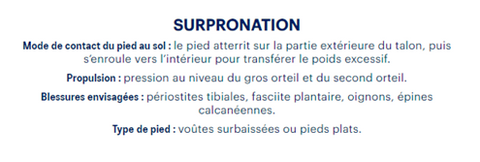Spring is coming, the sun is becoming more and more present and warmer, the snow is melting, and the buds are starting to bloom. What better way to find the motivation you need for a little outdoor run? However, for this activity to be as enjoyable as it is beneficial, it is essential to equip yourself correctly, and that starts with choosing the right running shoes. Do not underestimate the importance of this equipment, because your health depends on it. Unsuitable shoes could not only compromise your well-being, but also expose you to injury. Let's review the main criteria to consider when making your purchase.
Determine your needs
Before selecting your running shoes, it is crucial to understand your running profile, as this will determine the characteristics of the shoe that will suit you best.
First of all, your type of running will have a significant impact on choosing the shoes best suited to your needs. If you practice trail running opt for shoes with studs for better grip, while for road running you will not need crampons , but with a wear-resistant outsole on asphalt.
Additionally, it is essential to take the seasons into account. Opt for well-ventilated shoes in summer to keep your feet cool, and waterproof shoes in fall and spring to keep them dry. In winter, waterproof shoes with integrated or removable crampons are necessary for better grip on slippery surfaces. If you run year-round, chances are you need more than one pair in your wardrobe!
Identify your stride type
Secondly, it is essential to know your runner's stride type. This will allow you to determine whether you need an adjustment in the shoe or not.
Here are illustrations of the three common stride types – neutral, supinator and overpronator – to help you identify your own stride type. The images show the footprint of the foot and the corresponding point of impact. Please note that the origins of these illustrations are at the bottom of this blog.
Stride type of a neutral foot






Trick:“Look at the wear on your shoes to help you determine what your stride type is.”



In the case of neutral stride or supinator stride, each of these two types represents approximately 45% of the population. For these 2 types of stride, a shoe with good cushioning and good support will satisfy your needs. ==> Discover the collection of neutral/supinator shoes
In the case of an overpronator runner, you will need a shoe with better support and good stability in order to minimize the tendency of the ankles to roll inwards and thus prevent the risk of injury.
==> Discover the collection of overpronator shoes
Get the right fit
Having the right length and width of shoes is also essential to prevent blisters and pain. Keep in mind that the farther you run, the more space you'll need in your shoes.
You may need slightly larger shoes if you run long distances because your feet naturally swell when you run. A properly fitted running shoe will contour to the shape of the midfoot and heel while allowing some wiggle room around the toes.
Tip: “The space between your toes and the end of the shoe should be half or the full width of an inch of your hand.”
Check that the width of the shoe fits the width of your foot to avoid fit issues. Width is just as important as length for a well-fitting shoe. Some people have wider or narrower feet.
Shoes that are too wide will allow the feet to move too freely and increase the risk of injury, while shoes that are too narrow can cause serious problems for your feet. Your foot should be able to move from side to side across the forefoot without going past the edge of the insole.
You shouldn't feel the base of your little toe resting on the edge of the shoe last; if so, the shoe is too narrow. Your foot should also not allow too much movement as this will cause friction and thus blisters.
Tip: "You shouldn't feel the base of your little toe resting on the edge of the shoe last; if it does, the shoe is too narrow."
The cushioning of the shoe
Choose cushioning based on your personal preference and weight for better stability and comfort.
Some people prefer to run like on a cloud while others will opt for less cushioning but more dynamism.
The weight and size of the runner will also have an impact, meaning that the higher these elements are, a little less cushioning is preferable in order to maintain more stability.
Now that you have all the necessary information, don't wait any longer to find the perfect pair of running shoes for you and fully enjoy your running sessions!
Sources:
https://www.asics.com/fr/fr-fr/running-advice/understanding-pronation-find-the-right-shoes-for-you/
https://www.asics.com/fr/fr-fr/asics-advice/running-shoes-guide-finding-the-right-fit/
https://www.newbalance.fr/fr/exp-pronation.html
https://www.newbalance.ch/fr/Running/Conseils/Conseiller-en-chaussures-de-course/





